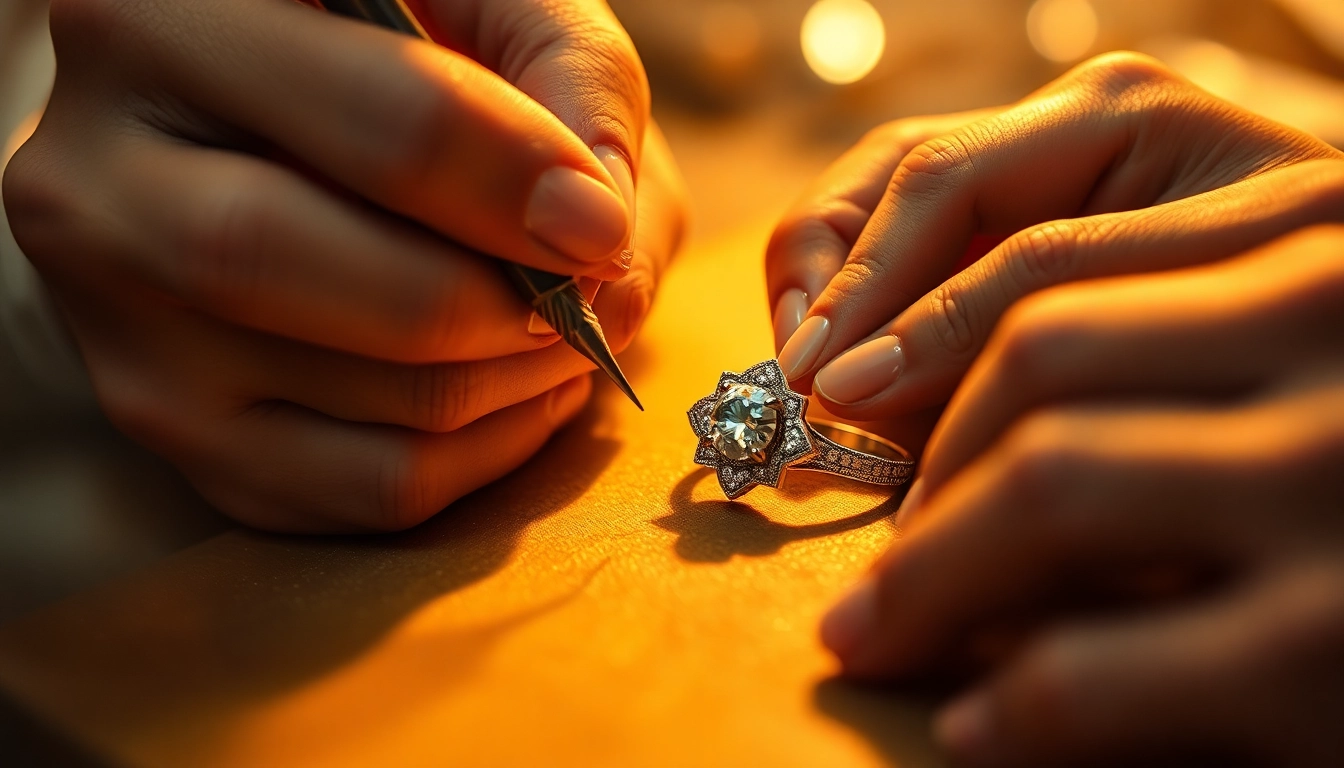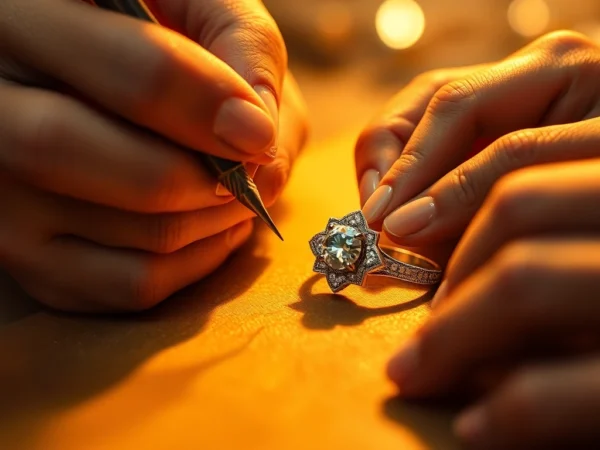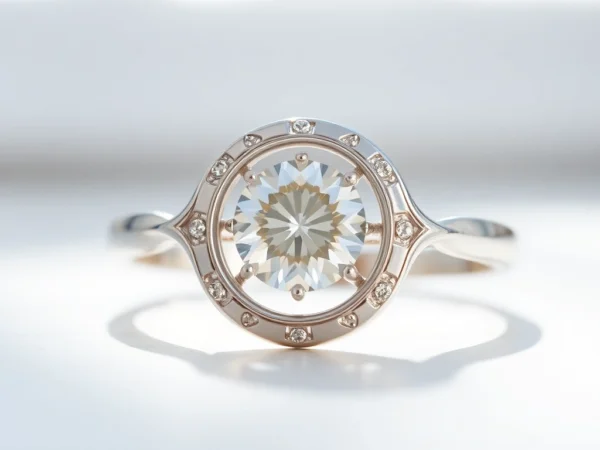Mastering Engagement Ring Production: Techniques, Design, and Quality Assurance
Introduction to Engagement Ring Production
Creating the perfect engagement ring is a blend of artistry, craftsmanship, and scientific precision. The process of engagement ring production involves meticulous steps that ensure each piece is not only beautiful but also enduring. From the initial design concept to the final quality assurance, manufacturers strive to produce rings that symbolize love, eternity, and unique personal stories.
Historical development of engagement rings
The tradition of engagement rings dates back thousands of years, with origins in ancient Egypt and Rome, where rings symbolized eternity and commitment. Historically, gold was the preferred material, symbolizing wealth and stability, with elaborate designs often reserved for nobility. The modern tradition gained prominence in 15th-century Europe, notably with the Dowry wedding ring, which evolved into a symbol of vows. The introduction of diamonds in the 19th century, facilitated by the discovery of diamond mines and advancements in cutting techniques, revolutionized engagement ring production. These changes transformed rings from simple bands into sparkling symbols of love with complex settings and exquisite gemstones. Today, technological innovations and ethical sourcing continue to shape engagement ring production, ensuring sustainability alongside beauty.
Modern techniques in ring manufacturing
Contemporary engagement ring production leverages advanced techniques such as CAD (Computer-Aided Design) and 3D printing, enabling precise, customizable designs that were once impossible. CAD allows jewelers to create intricate, detailed models digitally, which are then brought to life through 3D printing for wax models. This process ensures accuracy and allows clients to visualize their rings in high detail before manufacturing. High-tech casting methods, such as lost-wax casting and controlled vacuum casting, produce durable, high-fidelity metal structures. Laser welding and engraving add detailed touches and personalized inscriptions with pinpoint accuracy, while modern polishing techniques give rings a refined finish with superior brilliance. Furthermore, innovations like lab-grown diamonds ensure sustainability and cost-effectiveness without compromising quality.
Key materials used in engagement ring production
The choice of materials significantly influences the ring’s durability, appearance, and symbolic meaning. Gold remains a classic choice, with 14K (585 prong) and 18K (750 prong) options offering varying levels of purity and strength. Platinum (600 or 950 prabos) is valued for its strength, hypoallergenic qualities, and natural white luster. Palladium and titanium are alternative metals increasingly popular for their lightweight and modern aesthetics. Central to high-end engagement rings are gemstones such as diamonds, sapphires, rubies, emeralds, and innovative lab-grown diamonds. Each material’s physical properties—hardness, clarity, color, and cut—are meticulously assessed to ensure optimal brilliance and longevity. Ethical sourcing and certification standards, like GIA or IGI, become crucial factors in material selection to guarantee authenticity and responsible origins.
Design Principles for Engagement Rings
Popular styles and their appeal
Engagement ring styles vary widely, but certain classic and modern designs continue to dominate. The solitaire setting remains timeless, emphasizing a single central gemstone, often a round brilliant cut diamond, to symbolize unity and clarity. Halo designs surround the central stone with smaller diamonds, enhancing size and brilliance, perfect for those who like opulence. Three-stone rings symbolize past, present, and future, adding deeper symbolism. Vintage-inspired motifs with intricate filigree, milgrain edges, and engraving appeal to those seeking uniqueness. Contemporary minimalistic rings use sleek lines and asymmetry to reflect modern aesthetics. Each style caters to personal preferences and cultural trends, ensuring that the ring not only embodies love but also individual taste.
Custom vs. ready-made designs
Choosing between custom and ready-made engagement rings involves considerations of individuality, budget, and time. Custom designs allow clients to collaborate with jewelers to craft a personalized piece, incorporating specific gemstones, metals, and motifs that reflect the wearer’s personality or shared history. This process may involve sketching, digital visualization, and multiple adjustments, resulting in a truly unique ring. Ready-made rings, however, offer the advantage of immediate purchase, often with established designs that have stood the test of time. They are generally more cost-effective and faster to acquire. Both options benefit from the use of modern design technology, but custom rings provide greater flexibility to incorporate innovative ideas like embedded hidden messages or alternative materials.
Balancing aesthetics with durability
While visual appeal is paramount, engagement ring production must also prioritize durability. Selecting robust materials, such as platinum or 18K gold, and ensuring high-quality gemstone settings are essential. Prong, bezel, and channel settings secure stones effectively, reducing the risk of dislodgement. The hardness and cleavage properties of stones influence their fitting; diamonds are preferred for their exceptional hardness, but alternative gemstones require specific settings for protection. Modern manufacturing employs techniques like laser precision, which strengthens the integrity of the setting while maintaining aesthetic elegance. Additionally, design features such as rounded edges and smooth surfaces enhance comfort and longevity. Achieving this balance guarantees that the ring can withstand daily wear without compromising beauty.
Manufacturing Process and Quality Control
Step-by-step engagement ring production workflow
The production of an engagement ring involves a systematic workflow ranging from design conception to final polishing. It begins with a detailed consultation, understanding the client’s preferences. Next, CAD models are drafted, allowing for virtual modifications and client approval. The digital design is transformed into a wax or resin model via 3D printing, which is then used for lost-wax casting in the chosen metal. Once cast, the ring undergoes cleaning to remove residual wax and imperfections. Gemstones are selected based on strict certification standards and set into the ring using precise techniques like laser welding. The final steps include meticulous polishing, surface finishing, and inspections for structural integrity and visual brilliance. Advanced microscopes and spectrometers are employed to detect any flaws or inconsistencies.
Techniques to ensure high-quality craftsmanship
Ensuring top-tier quality involves multiple layers of control. Precision casting minimizes porosity and deformation, while laser technology provides micro-level adjustments. Skilled artisans manually inspect and refine each piece, checking for symmetry, tightness of settings, and surface smoothness. For gemstone settings, advanced tools ensure stones are securely held without over-tightening, preventing damage. Surface treatments like electro-polishing or diamond polishing give rings their characteristic high shine. Additionally, implementing quality standards from reputed organizations such as GIA or IGI, and obtaining certification for each piece, guarantees authenticity and value. This rigorous approach elevates the craftsmanship from mere manufacturing to an art form.
Inspection and certification standards
Certification plays a vital role in verifying the quality and authenticity of engagement rings, especially regarding principal gemstones. Reputable labs such as GIA provide detailed reports on cut, clarity, color, and carat weight. These certificates are integral for high-value pieces, reassuring buyers of gemstone integrity. Metal purity is tested through precise assays, ensuring specifications match the declared alloy content. Finished rings undergo inspection under high-magnification to identify any surface flaws or setting issues. Only rings passing stringent quality checks are shipped with certifications, establishing trust and supporting claims of excellence. Such standards are becoming industry benchmarks, influencing customer confidence and resale value.
Choosing the Right Engagement Ring Producer
Factors influencing provider selection
When selecting a ring producer, factors such as craftsmanship reputation, transparency, customization options, and after-sales service are critical. A proven track record with a portfolio of satisfied clients indicates reliability. Technological capability, including CAD design and lab-grown diamond integration, reflects innovation. Pricing transparency, clear warranty policies, and ethical sourcing contribute to trustworthiness. Interactive consultations, flexibility in design, and a user-friendly website demonstrate customer-centric focus. Industry awards and accreditation from professional jewelers’ associations add further assurance. Investigating these aspects helps avoid pitfalls, enables informed decisions, and guarantees a ring produced with passion and precision.
Importance of certification and authenticity
Authenticity assurance through certification distinguishes reputable producers in a competitive market. Certificates authenticate gemstone qualities, verify ethical sourcing, and establish the ring’s value. For instance, lab-grown diamonds certified by IGI or GIA assure buyers of cruelty-free origin and comparable quality at lower cost. Metal purity certificates confirm alloy composition, preventing legal or health issues. Authenticity also affects insurance and resale. Producers that partner with labs and provide detailed documentation foster customer confidence. In the realm of engagement ring production, certification is not just a legal formality — it’s a testament to quality, transparency, and unwavering commitment to excellence.
Customer reviews and reputation benchmarks
Analyzing customer reviews and industry reputation benchmarks provides insights into the producer’s service quality, craftsmanship, and reliability. Positive feedback emphasizing precision, durability, and responsiveness highlights a manufacturer’s strengths. Conversely, complaints about delays, misrepresentation, or poor quality serve as red flags. Leading producers often showcase testimonials, case studies, and engagement stories, underscoring their expertise. Reputation portals, like Trustpilot or Google reviews, combined with industry awards, help establish credibility. A well-reputed producer is committed to continuous improvement, transparent communication, and exceeding client expectations, all vital factors in ensuring the desired outcome in engagement ring production.
Trends and Future Directions in Engagement Ring Production
Innovative materials and smart jewelry integration
Future engagement ring production is poised to incorporate cutting-edge materials such as bio-resins, composite alloys, and alternatives like ceramic or tungsten for unique textures and enhanced durability. Additionally, smart jewelry integration is emerging, with rings embedded with health-tracking sensors or digital displays, allowing users to personalize their rings with real-time notifications or health data. 3D printing technology supports rapid prototyping and complex geometries, promoting personalization at scale. These innovations ensure that engagement rings evolve from simple symbols into multifunctional pieces reflecting technological progress and individual identity.
Sustainable and ethical sourcing practices
Consumers increasingly demand ethically sourced materials, pushing producers toward sustainable practices like conflict-free diamonds, recycled metals, and traceable gemstone origins. Blockchain technology is now aiding in transparent supply chains, ensuring authenticity and ethical standards. Eco-friendly manufacturing processes, such as energy-efficient casting and low-impact mining, are becoming industry norms. Certification from recognized bodies emphasizing environmental and social responsibility further assures buyers. As sustainability becomes a central theme, engagement ring production will align more closely with ecological and ethical principles, elevating the symbolic value of love and commitment to a broader social responsibility.
Adapting to changing consumer preferences
Consumer preferences are shifting toward minimalistic, bespoke, and eco-conscious designs. Modern customers look for rings that embody individuality, with options for embedded personalization—such as handwritten messages, mixed metals, or alternative gemstones. Virtual reality (VR) and augmented reality (AR) experiences enable clients to preview customized designs before production, enhancing satisfaction. Moreover, flexible financing plans, rental or resale options, and on-demand manufacturing are addressing economic and sustainability concerns. Engagement ring production is transforming to prioritize user-centered innovation, ensuring relevance and emotional resonance in future markets.


